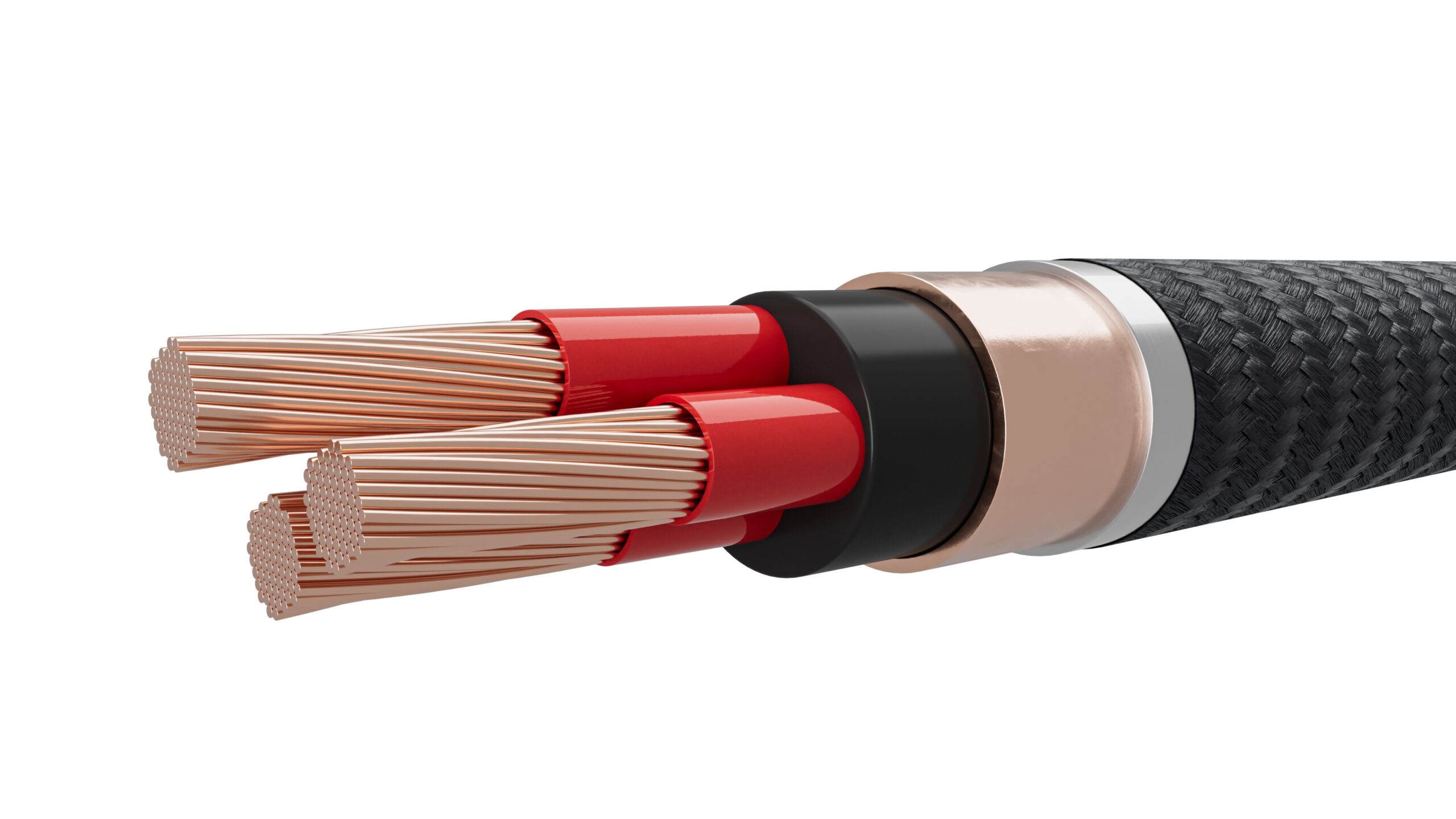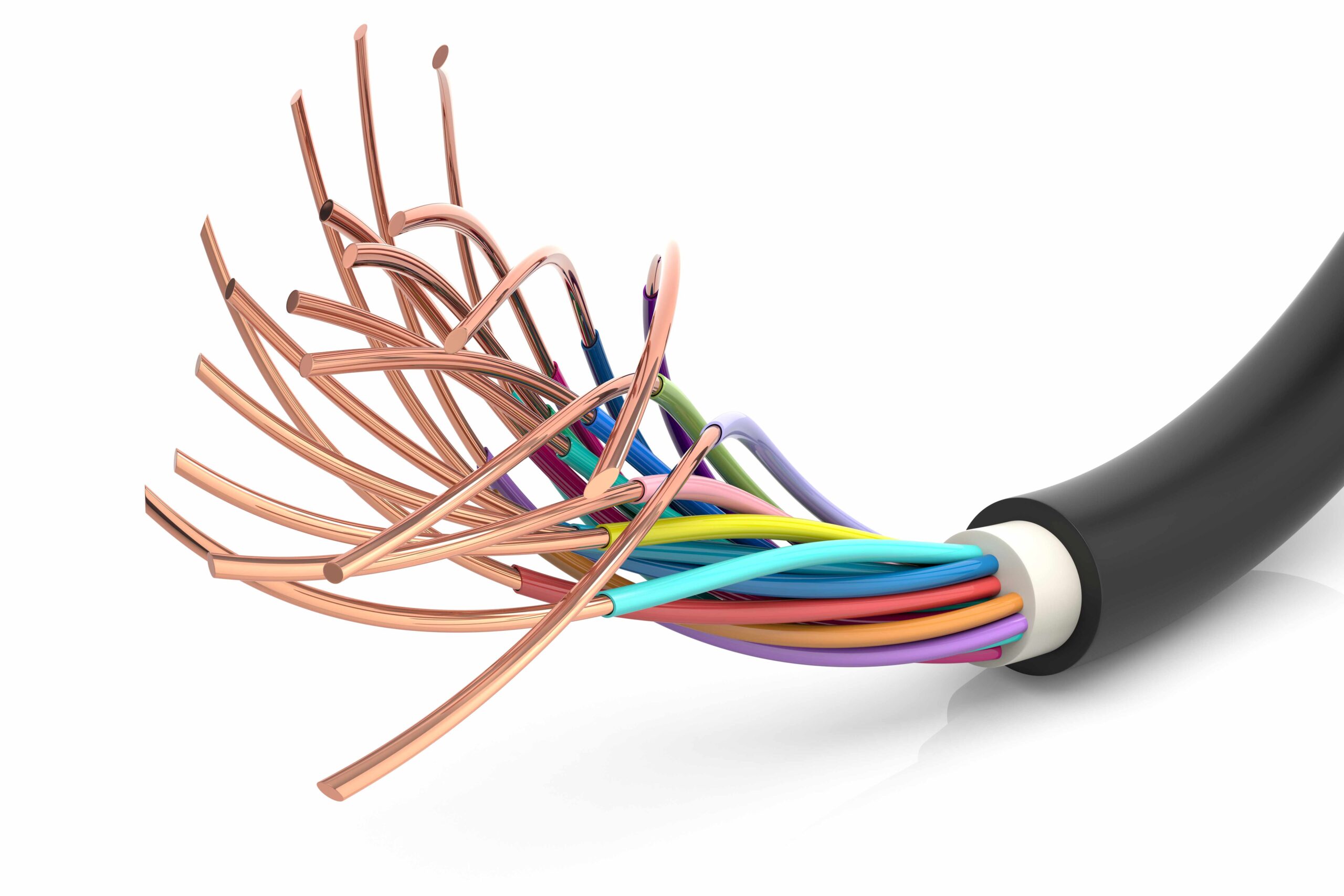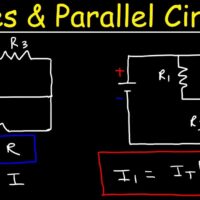Wires and cables transmit electrical power or communication signals. They are essential for modern technology and infrastructure.
Wires and cables play a crucial role in powering homes, businesses, and industries. They ensure the seamless transmission of electricity and data, enabling everyday operations. High-quality wires and cables are vital for safety and efficiency, reducing the risk of electrical hazards.
Different types, such as coaxial, fiber optic, and twisted pair, serve specific purposes in various applications. Understanding their functions and proper usage can enhance system performance and reliability. Investing in the right wires and cables can significantly impact the durability and functionality of electrical and communication systems.
Evolution Of Wires And Cables
The evolution of wires and cables is a fascinating journey. It showcases human ingenuity and technological advancements. From simple beginnings to complex systems, wires and cables have transformed our world.
Early Development
Early electrical systems used basic wires. These early wires were made from metals like copper and iron. They were often insulated with cloth or rubber. This insulation was crucial to prevent short circuits and fires.
In the 19th century, the telegraph revolutionized communication. Telegraph wires spanned continents and oceans, connecting the world like never before. Electricity soon followed, with Thomas Edison and Nikola Tesla pioneering electrical distribution systems. Their work laid the groundwork for modern electrical grids.
Technological Advancements
The 20th century saw rapid advancements in wire and cable technology. Plastic insulation replaced cloth and rubber. This made wires more durable and safer. Fiber optic cables were introduced in the late 20th century. These cables use light to transmit data, allowing for faster and more reliable communication.
Today, wires and cables are used in countless applications. They power homes and businesses, connect devices, and enable the internet. Innovations continue to emerge, such as superconducting cables and wireless power transmission. These new technologies promise to make wires and cables even more efficient and versatile.
| Era | Key Development |
|---|---|
| 19th Century | Telegraph and Electrical Distribution Systems |
| 20th Century | Plastic Insulation and Fiber Optic Cables |
| 21st Century | Superconducting Cables and Wireless Power Transmission |
- Telegraph wires revolutionized communication.
- Plastic insulation improved wire safety.
- Fiber optic cables enabled faster data transmission.
- New technologies promise greater efficiency.

Types Of Wires And Cables
Understanding the different types of wires and cables is essential for anyone working with electrical systems. Each type serves a unique purpose and offers specific benefits. Below, we explore the most common types: Copper Wires, Fiber Optic Cables, and Coaxial Cables.
Copper Wires
Copper wires are known for their excellent conductivity. They are used in various applications, from household wiring to industrial machinery. Copper wires can be found in:
- Electrical power cables
- Telecommunication cables
- Automotive wiring
Their high conductivity and flexibility make them a popular choice. Copper wires are also resistant to corrosion, ensuring a long lifespan.
Fiber Optic Cables
Fiber optic cables transmit data using light. They are ideal for high-speed internet and telecommunications. These cables consist of thin strands of glass or plastic fibers. Benefits of fiber optic cables include:
- High-speed data transmission
- Greater bandwidth
- Immunity to electromagnetic interference
Fiber optic cables are crucial for modern communication networks. They support the vast amounts of data needed for today’s digital world.
Coaxial Cables
Coaxial cables are commonly used for television and internet connections. They consist of a central conductor, an insulating layer, and a metallic shield. This design reduces signal interference. Coaxial cables are often used for:
- Cable television
- Internet connections
- Satellite TV systems
Their ability to transmit high-frequency signals makes them ideal for these applications. Coaxial cables ensure reliable and clear signal transmission.
Applications In Different Industries
Wires and cables are crucial in modern industries. They connect systems, transfer data, and ensure efficient power distribution. Let’s explore how different industries utilize these essential components.
Telecommunications
Telecommunications relies heavily on wires and cables. These components enable reliable and fast communication between devices. Fiber optic cables are widely used. They offer high-speed data transmission over long distances. Coaxial cables are also popular. They are used in cable TV and internet services. Twisted pair cables connect telephones and network systems.
- Fiber optic cables – high-speed data transmission
- Coaxial cables – cable TV and internet services
- Twisted pair cables – telephones and network systems
Power Distribution
Power distribution systems depend on wires and cables for efficient energy transfer. High-voltage cables carry electricity from power plants to substations. Medium-voltage cables distribute power in urban areas. Low-voltage cables are used in homes and offices. Underground cables are often preferred for safety and aesthetics.
| Type of Cable | Application |
|---|---|
| High-voltage cables | Power plants to substations |
| Medium-voltage cables | Urban area power distribution |
| Low-voltage cables | Homes and offices |
| Underground cables | Safety and aesthetics |
Data Transmission
Data transmission is vital in today’s digital age. Wires and cables ensure seamless data flow between devices. Ethernet cables connect computers and servers in networks. USB cables link peripherals like keyboards and printers. HDMI cables transmit high-definition audio and video signals. Serial cables are used for industrial machine communication.
- Ethernet cables – computer and server networks
- USB cables – peripherals like keyboards and printers
- HDMI cables – high-definition audio and video signals
- Serial cables – industrial machine communication

Credit: www.homedepot.com
Factors Influencing Wire And Cable Selection
Choosing the right wire or cable is vital for any electrical project. Several factors play a role in this decision. These factors ensure safety, efficiency, and longevity. Let’s explore the key elements that influence wire and cable selection.
Conductivity
Conductivity refers to how well a material carries electrical current. Copper and aluminum are common choices. Copper is highly conductive but more expensive. Aluminum is cheaper but less conductive. A table below summarizes the differences:
| Material | Conductivity | Cost |
|---|---|---|
| Copper | High | High |
| Aluminum | Moderate | Low |
Insulation
Insulation protects wires from environmental factors. It also prevents short circuits and electric shocks. Common insulation materials include PVC, rubber, and Teflon. Each material has unique properties:
- PVC: Affordable and versatile, suitable for most applications.
- Rubber: Flexible and durable, ideal for outdoor use.
- Teflon: Heat-resistant, perfect for high-temperature environments.
Durability
Durability ensures the wire or cable lasts under various conditions. This factor includes resistance to wear, corrosion, and temperature changes. A durable wire reduces maintenance costs and enhances safety.
Choose materials that withstand the specific conditions of your project. For example, outdoor cables need UV resistance. Industrial cables should resist chemicals and high temperatures.
Installation And Maintenance
Installing and maintaining wires and cables is vital for safety. Proper methods ensure efficiency and longevity. This section covers the essential steps for handling, testing, and inspecting cables.
Proper Handling
Handle cables carefully to avoid damage. Never pull them by the jacket or insulation. Use appropriate tools for cutting and stripping. Store cables in a cool, dry place to prevent deterioration.
Follow these tips for proper handling:
- Avoid kinking or twisting the cables.
- Use cable ties instead of knots.
- Label all cables for easy identification.
Testing Procedures
Testing cables ensures they work correctly. Use a multimeter for electrical tests. Check for continuity, resistance, and insulation quality. Document all test results for future reference.
Follow these steps for testing procedures:
- Set the multimeter to the correct setting.
- Attach the probes to the cable ends.
- Record the readings and compare them to the standards.
Regular Inspections
Regular inspections prevent issues before they become serious. Look for signs of wear or damage. Check connectors and terminals for corrosion. Replace any damaged parts immediately.
Create a schedule for inspections:
| Frequency | Inspection Task |
|---|---|
| Monthly | Visual inspection of all cables |
| Quarterly | Electrical testing and documentation |
| Annually | Full system audit and maintenance |
Environmental Impact And Sustainability
The production and disposal of wires and cables have significant environmental effects. Wires and cables often consist of materials like copper, aluminum, and plastic. These materials can harm the environment if not managed properly. Efforts to reduce this impact focus on recycling and sustainable alternatives. This section explores recycling initiatives and green alternatives for wires and cables.
Recycling Initiatives
Recycling wires and cables helps reduce environmental damage. It involves reprocessing materials to create new products. This reduces the need for new raw materials and lowers waste.
Here are some key recycling initiatives:
- Collection Programs: Many organizations collect old wires and cables. They have drop-off locations for easy recycling.
- Sorting and Processing: Recycling centers sort and process wires. They separate metals from plastics for reuse.
- Metal Recovery: Copper and aluminum are valuable metals. Recycling them saves energy and resources.
Recycling helps conserve natural resources and reduce pollution.
Green Alternatives
Green alternatives to traditional wires and cables are emerging. These options use eco-friendly materials and processes. They aim to minimize environmental harm.
Some green alternatives include:
- Biodegradable Cables: Made from plant-based materials, these cables decompose naturally.
- Low-Emission Manufacturing: Some companies use low-emission processes. This reduces the carbon footprint of cable production.
- Recycled Materials: Using recycled plastics and metals reduces waste. It also conserves resources.
Green alternatives help promote sustainability in the wire and cable industry.
Future Trends In Wire And Cable Technology
The world of wires and cables is evolving rapidly. New innovations promise to revolutionize how we use and perceive these essential components. Let’s explore some exciting future trends in wire and cable technology.
Smart Cables
Smart cables are at the forefront of wire and cable technology. They come equipped with built-in sensors that monitor performance and usage. These cables can also report faults and potential issues before they become critical.
Imagine a cable that can notify you when it is overheating or nearing the end of its lifespan. Such smart features can significantly reduce downtime and maintenance costs. Below is a table highlighting the benefits of smart cables:
| Feature | Benefit |
|---|---|
| Performance Monitoring | Ensures optimal operation |
| Fault Detection | Prevents unexpected failures |
| Usage Tracking | Extends cable lifespan |
Smart cables are ideal for critical applications. They provide real-time data and enhance safety and efficiency.
Wireless Power Transmission
Wireless power transmission is another groundbreaking trend. This technology eliminates the need for physical cables to transfer power. It offers a clutter-free and more efficient way to power devices.
Here are some key benefits of wireless power transmission:
- Reduces cable clutter
- Increases safety by eliminating tripping hazards
- Enables charging of multiple devices simultaneously
Wireless power can transform how we design and use electronic devices. Imagine a world where your gadgets charge without plugging them in. This technology is already making strides in consumer electronics and industrial applications.

Challenges And Solutions
Wires and cables are essential in modern life. They power our homes, offices, and devices. But they come with their own set of challenges. Understanding these challenges and finding solutions is key to ensuring safety and efficiency.
Overheating Issues
Overheating is a common problem in wires and cables. It can cause damage and even fires. Overheating occurs when too much current flows through a wire. This causes the wire to heat up.
To prevent overheating, use wires with the correct gauge. A thicker wire can handle more current. Also, ensure proper ventilation. Avoid bundling cables together without space. This helps to dissipate heat.
Using high-quality materials is crucial. Good insulation protects the wire and prevents overheating. Regular maintenance checks can catch overheating issues early.
Cable Management Solutions
Effective cable management keeps your space tidy and safe. Tangled wires can cause accidents and damage. Use cable organizers like clips, ties, and sleeves. These tools keep cables in place and prevent tangling.
Labeling cables is a smart practice. It makes it easy to identify and manage cables. Color-coded labels are especially helpful. This reduces confusion and saves time.
For large setups, consider using cable trays and racks. These solutions provide structured pathways for cables. This reduces clutter and improves airflow around cables.
| Challenge | Solution |
|---|---|
| Overheating | Use correct gauge, ensure ventilation, use quality materials |
| Cable Management | Use organizers, label cables, use trays and racks |
Frequently Asked Questions
What Is The Difference Between Wires And Cables?
Wires consist of a single conductor, while cables have multiple conductors bundled together. Wires are used for simpler connections; cables handle more complex setups.
What Are The Three Types Of Wires?
The three types of wires are: 1. Copper wires are commonly used for electrical wiring due to their conductivity. 2. Aluminum wires are lightweight and used for power distribution. 3. Fiber optic wires transmit data via light, ideal for high-speed internet.
How Do You Identify Wires And Cables?
Identify wires and cables by checking color codes, labels, and markings. Use a multimeter for electrical testing. Consult the wiring diagram for accuracy.
What Are The Three Types Of Cable?
The three types of cable are coaxial, twisted pair, and fiber optic. Coaxial cables transmit television signals. Twisted pair cables are used for telephone and network connections. Fiber optic cables provide high-speed internet by transmitting light.
Conclusion
Understanding the differences between wires and cables is crucial. They play a vital role in electrical systems. Choose the right one for your needs. Proper selection ensures safety and efficiency. Stay informed and make smart decisions for your electrical projects.
Your knowledge can prevent costly mistakes and enhance performance.




